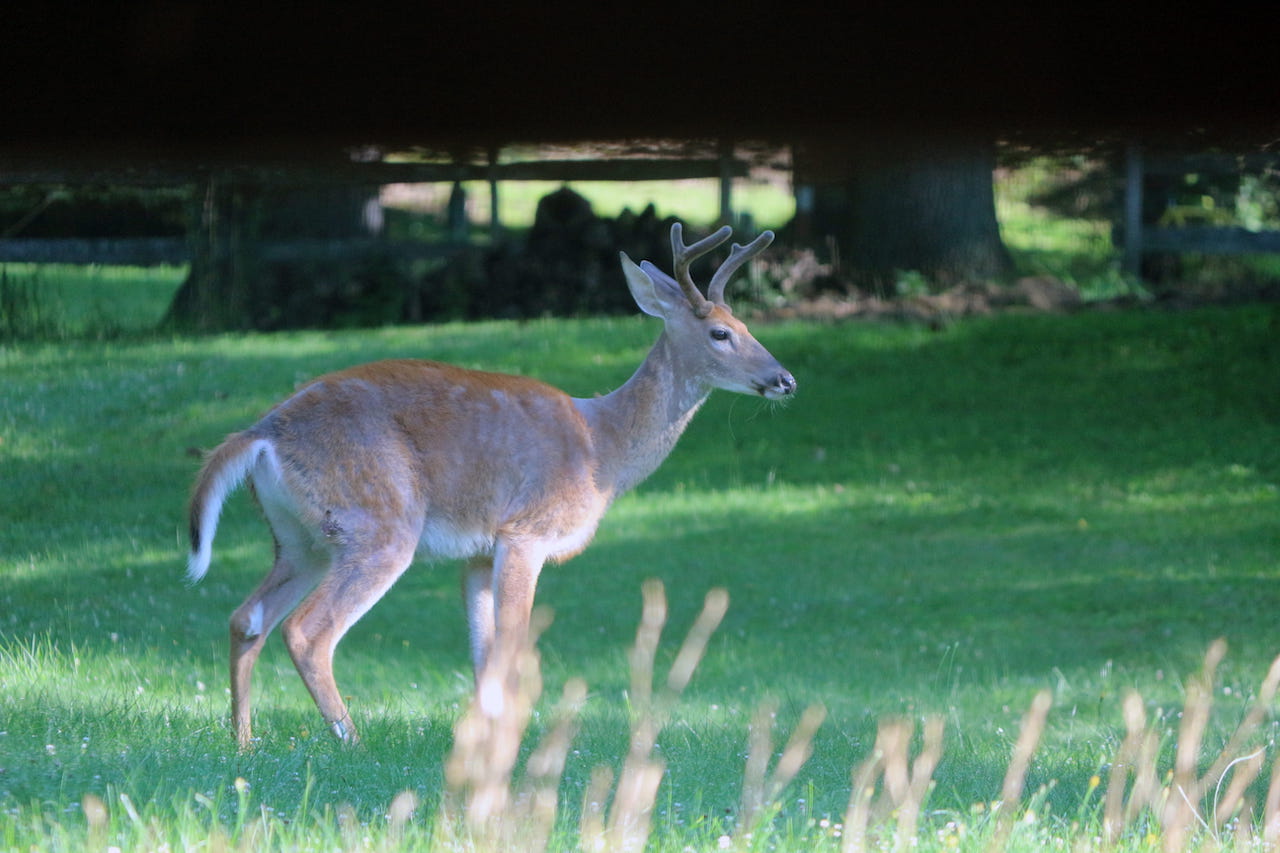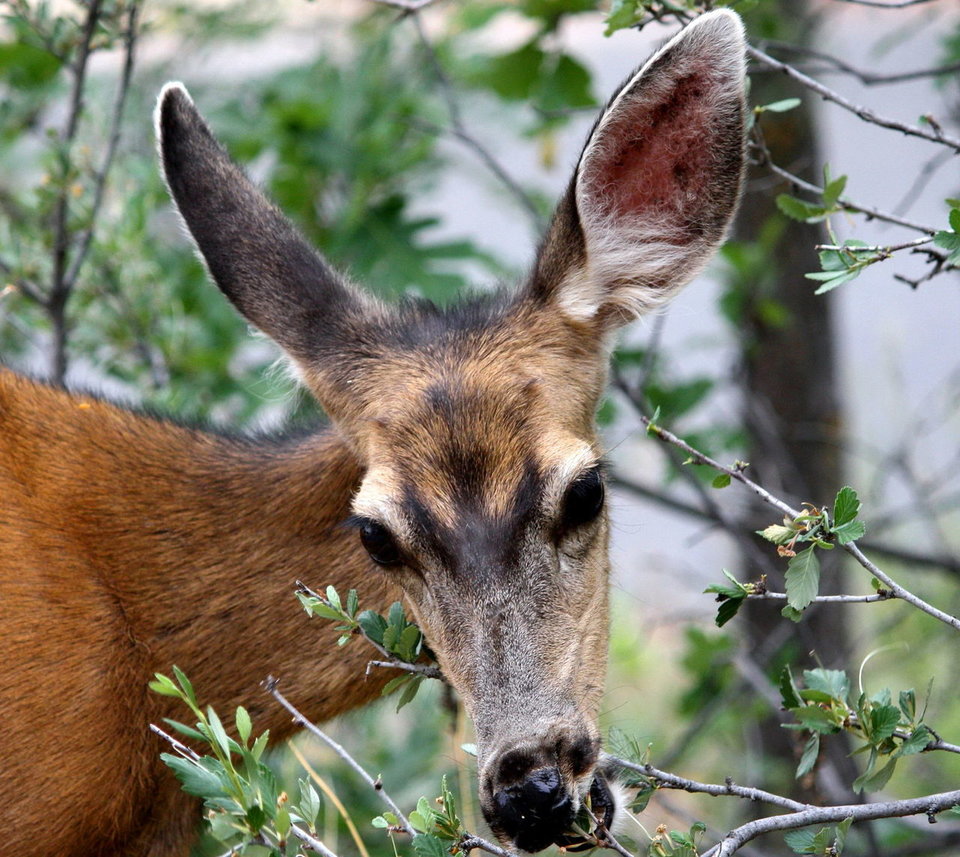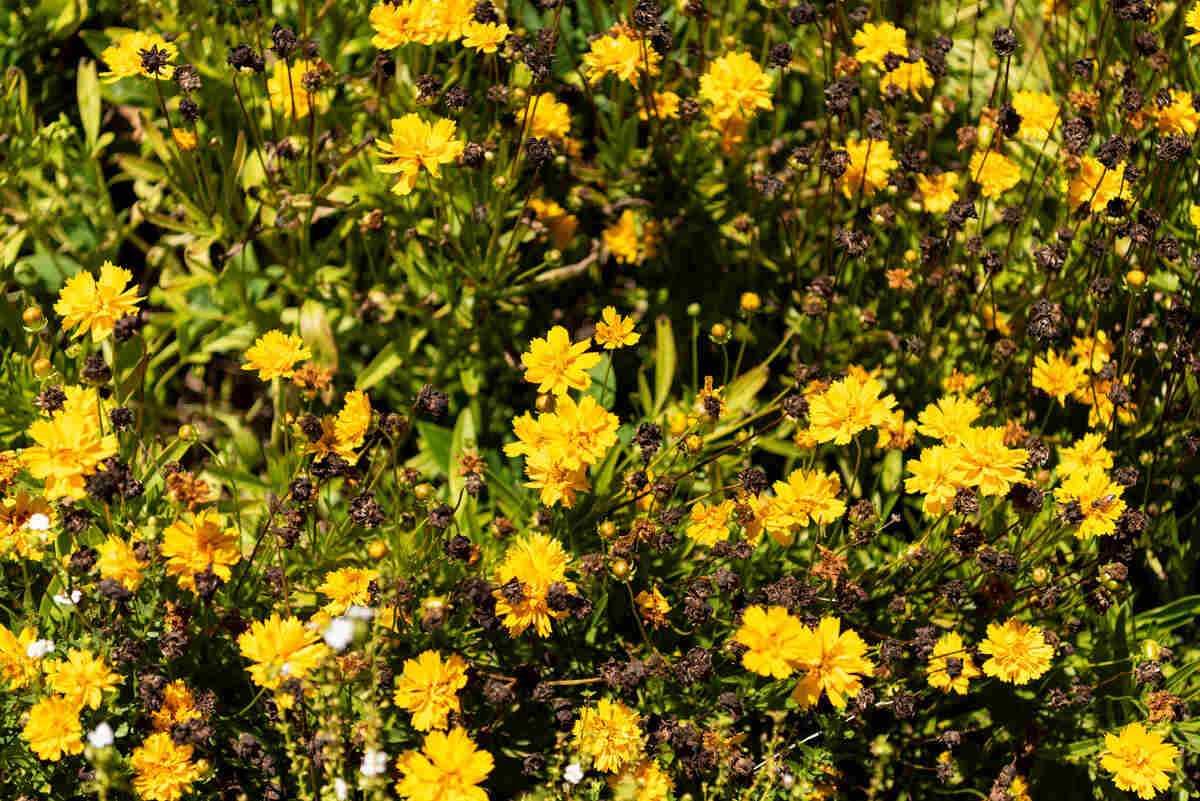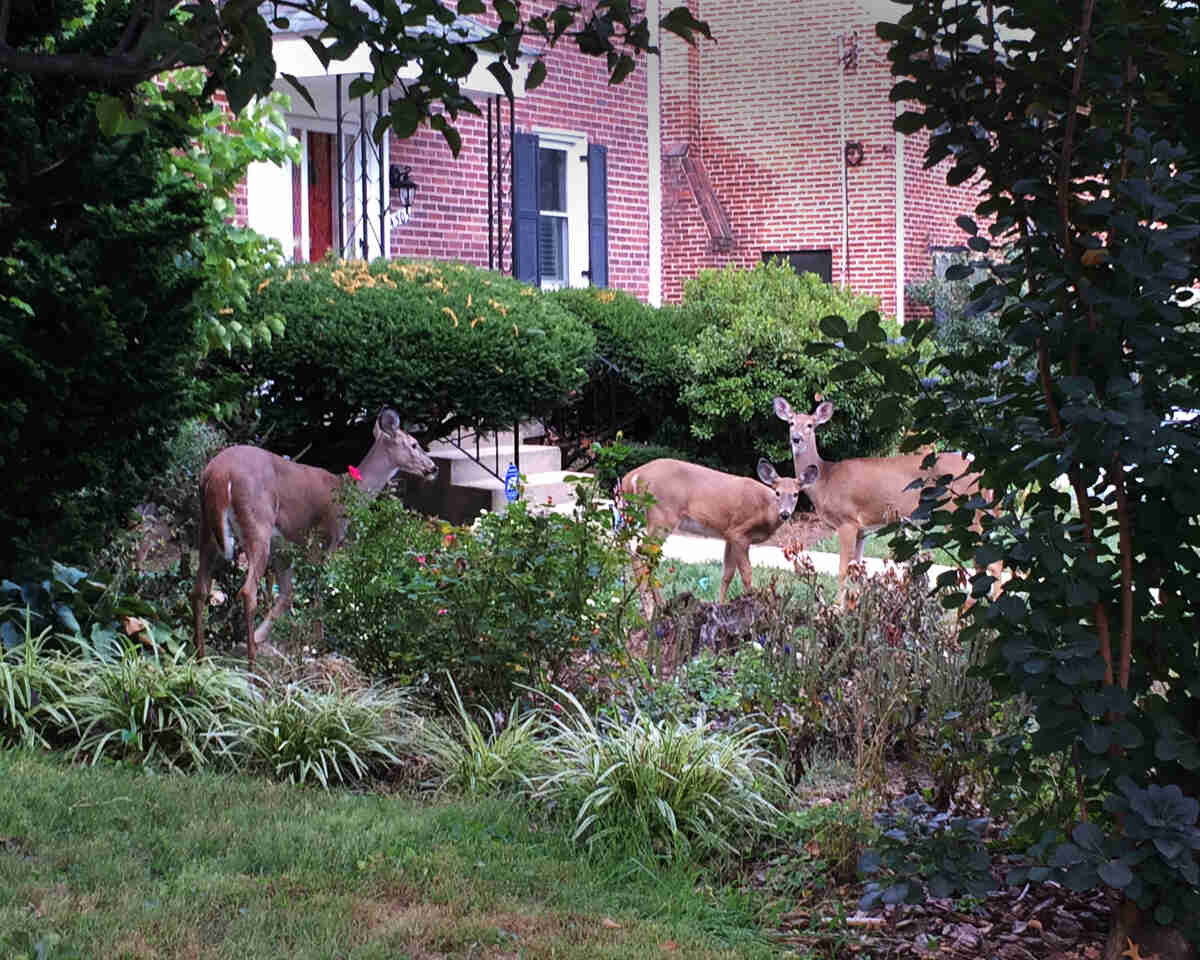
When we put together verdant, complex and beautiful landscapes in our backyards, we’re trying to imitate our own little slice of the natural world.
But for wild animals like deer, there’s little difference. To them, that tree-lined lawn is a little meadow where they can grab a quick bite. And however nice it is to see the animals gracefully amble into your lawn as you get ready for work in the morning, they’re slowly eating away all that hard work.
Each year in the Commonwealth, white-tailed deer account for millions of dollars in damage to crops, trees and gardens, says the Izaak Walton League of America. With a little landscape planning and clever application of deterrents, though, you can keep your investment from becoming part of that statistic.
Deer Problem ‘Huge’ in Richmond
The state’s largest wild herbivore has to eat a lot of plant material to keep on its feet. And as urban sprawl encroaches on their habitats, the already overpopulated deer herds are finding tasty tidbits in Richmond landscaping instead of woodland meadows.
So how big is the deer problem for Richmond homeowners?
“It’s huge,” says Beth Burrell, horticulturalist for Cedarfield, a retirement community on 90 wooded acres in Richmond. Burrell says the deers’ natural habitat is diminishing, while much of the overpopulation of herds occurs around built-up areas. That pushes deer into residential or commercial communities where they find new and exotic plants to snack on.
“It’s a domino effect,” Burrell says. Less-natural food pushes them out of the woods and new plants in urban landscapes draw them into backyards instead.
Homeowners don’t have a lot of options on controlling deer populations from their back porch. But that doesn’t mean they just have to watch the deer rip up their favorite maple tree or rose bush.
Gentle Deterrence

Burrell knows a thing or two about deer and gardens. Not only did the topic factor into her master’s degree, she worked at a vast plantation alongside a managed deer herd more than 300 animals strong while keeping up 40 landscaped acres of garden.
It was there she was able to try out different methods of carefully deterring those deer, even spreading human hair around. She even teaches the occasional “Gardening with Deer” class at Lewis Ginter Botanical Garden in Lakeside.
She recommends starting out with some organic deterrents. Richmond-based company Your Wildlife Professionals breaks down the common types:
- Taste-based deterrents are applied directly to plant material deer eat, and the awful taste repels them. They must actually be consumed by the deer to make a difference, though, and while that can allow for some damage, there won’t be any new damage once the deer become trained on the offensive taste.
- Odor-based deterrents work via smell. When applied around the yard, it offends the animal’s highly-tuned sense of smell and keeps them from wanting to come into your yard in the first place.
- Odor- and taste-based deterrents combine the best of both.
The Red Pepper Flakes System
Today, Burrell’s got her system down, and it starts with something you probably have laying around: red pepper flakes.
She orders them off Amazon in three-pound bags, and as soon as they put in a new plant or anything, she sprinkles some of those pepper flakes around.
Other similar organic options abound, she says, such as garlic capsules that clip onto the tree or shrub and sprays with organic concoctions that repel deer via taste and smell. An added bonus for deterrents like these is their effectiveness against squirrels and rabbits as well as deer, Burrell says.
“I like to go as organic as possible,” she says. “Start with what’s easy.”
Other deterrents are also available over-the-counter, like sonic devices and even motion-activated sprinklers which deter deer with their sound and by spraying them with water. Chemical-based deterrents sprayed onto the surface of the foliage are also available. Try those if the other options aren’t getting results, or go all-in and combine them for maximum effect.
Shut Down Access
Perhaps the most effective option to keep persistent deer at bay is a physical barrier. Deer can’t eat or damage what they can’t reach. If the problem is bad enough, and you have the ability, netting or a solid fence is a great way to block your yard off from unwanted diners.
In the fall, young male deer rub their antlers on young trees to help them shed the down that grows on their antlers. Adult deer will do the same, marking their territory as well. This damage can be fatal to your favorite decorative cherry or that expensive young maple you just planted.
The solution? Simply stake the tree, Burrell says. Drive two stakes into the ground 3 to 4 four inches away from the trunk on either side of the tree, just as if the tree needed them for support. When the deer goes to rub against the tree, he’ll be blocked by the stakes.
For Your Next Trick, Try an Optical Illusion
But say your HOA won’t allow a barrier, or you’re looking for something less permanent. Burrell explains a little optical illusion you can play on the deer using two rows of stakes in the ground.
Drive a row of 3-foot-high stakes into the ground where you want the deer to stop. Then, about 3 feet in front of that row, drive another row of stakes 2 feet tall.
“That messes up their peripheral vision-they don’t want to step into it,” Burrell says. The effect will confuse the deer, interfering with its ability to judge how to get into the space. They’ll go looking for easier meals. “It’s an eyesore, but it’s cost-effective,” she says.
Favorite, Least-Favorite Plants for Deer

Like us, deer love good food. So if you don’t want them in your yard, change up the menu. One thing you don’t have to worry about is your lawn. Burrell says turf is rarely the target for deer, which are much more likely to go after trees or shrubs. So instead of delicious smells wafting through the trees like from a pie on a windowsill, these plants won’t smell so appetizing to hungry deer.
Burrell offers up some plants that rank as favorites for deer:
- Perennials: Hosta, Daylilies, Sedum
- Shrubs: Roses, Azaleas
- Trees: Fruit Bearing and Ornamental Trees (Apple, Plum, Crabapple, Cherry)
- Bulbs: Tulips, True Lilies
- Herbs: Chives, Parsley
- Vegetables: beans, lettuce
- Annuals: Sunflowers, Viola, Pansy, Impatiens
And some plants deer seldom eat:
- Perennials: Dianthus, Coneflowers, Ornamental Grasses(most), Salvia (most),
- Shrubs: Boxwood, Lilac, Forsythia, Beautybush
- Trees: Crape Myrtle, Black Gum, Ginkgo, Magnolia
- Bulbs: Narcissus (daffodils)
- Herbs: rosemary, thyme, lavender, mint, oregano, dill
- Vegetables: tomatoes, potatoes, eggplant, carrots, beets, cucumbers, squash, cabbage, kale, broccoli
- Annuals: Begonia, Petunia, Coleus
The University of Virginia also keeps a handy list of potential plant choices, from ones that deer frequently or occasionally damage, to those they rarely damage.
But whichever method you try, don’t hesitate says Burrell. What really draws the deer in is the smell of freshly turned soil. So when you rework those beds to account for the neighborhood herd, make sure you put in place any deterrents as quickly as possible.
The good news is that deer are creatures of habit, just like cattle. They like to trot the same route from bed to breakfast every day, so once you put your defenses in place and the deer stop coming around, back off until you see more activity.
“Whether spray, granule, organic — that’s the idea, put it out and then you’ve broken that habit,” she says.




